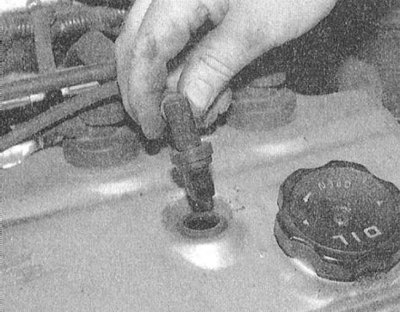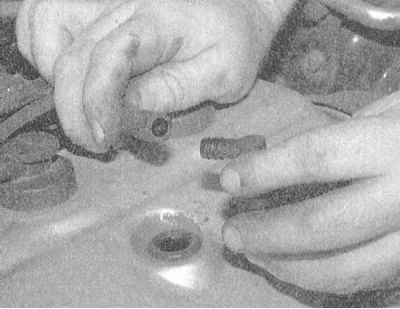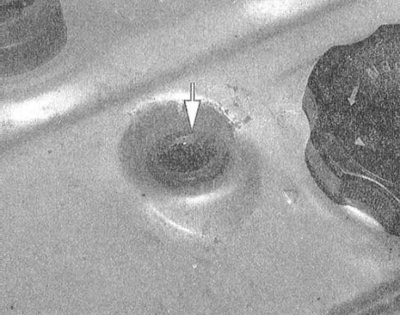The operating principle of the PCV system is detailed in Chapter Engine management systems.
1. The PCV system allows crankcase gases to be vented through a special valve through a hose back to the intake manifold, from where they enter the combustion chambers and are burned out during the normal operation of the engine. In addition to the valve, the system includes a hose leading from the cylinder head cover to the intake manifold and a fresh air supply hose from the air cleaner under the valve cover. The PCV valve with a hose connected to it is seated in the cylinder head cover.

2. With the engine running at idle, warmed up to normal operating temperature, pull up the valve and remove it, together with the connected hose, from its seat in the cylinder head cover.
3. Press your finger against the hole in the PCV valve - a vacuum should be felt, otherwise make sure that the hose, the fitting on the inlet pipeline and the valve itself are passable. Replace defective components.
4. Stop the engine and shake the valve - in good condition, a slight crackle should be heard inside the latter. If no sounds are heard, replace the valve.

5. To replace the valve, disconnect it from the hose - try to remember how the connection was organized.
6. When buying a new valve, make sure that it matches the size of your car engine. It would be best to directly compare the new valve with the old one removed from the engine.
7. Connect the new valve to the hose.

8. Check up serviceability of a condition of a rubber hose and a through plug. Replace defective components.
9. Firmly seat the valve in its regular place in the cylinder head cover.
